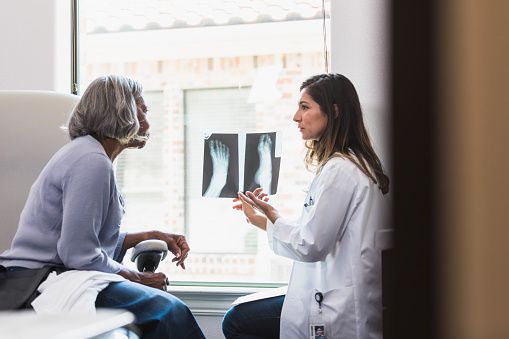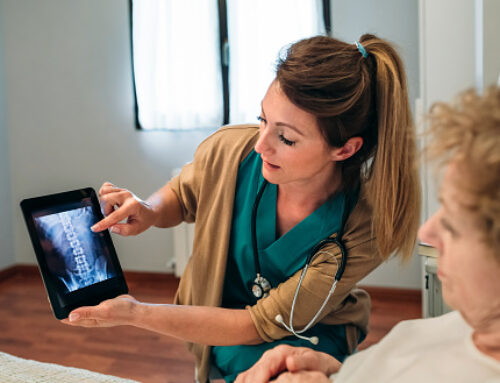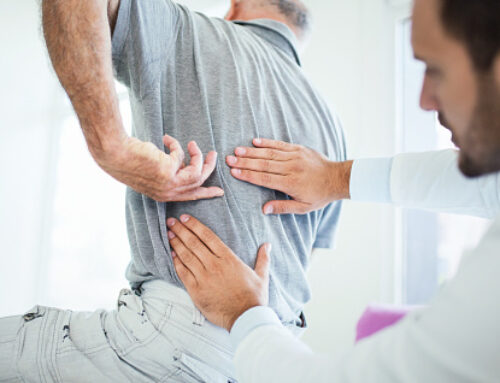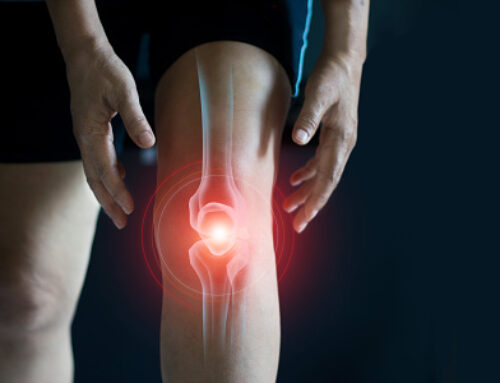Overview
Osteoporosis causes bones to become weak and brittle — so brittle that a fall or even mild stresses such as bending over or coughing can cause a fracture. Osteoporosis-related fractures most commonly occur in the hip, wrist or spine.
Bone is living tissue that is constantly being broken down and replaced. Osteoporosis occurs when the creation of new bone doesn’t keep up with the loss of old bone.
Osteoporosis affects men and women of all races. But white and Asian women, especially older women who are past menopause, are at highest risk. Medications, healthy diet and weight-bearing exercise can help prevent bone loss or strengthen already weak bones.
Osteoporosis is a condition of low bone density and structural deterioration of bone tissue that causes an increased risk of fractures. Osteoporosis on its own does not cause pain or obvious symptoms. Complications from the condition, including vertebral fractures, may result in back pain and limited mobility.
To catch osteoporosis early, as well as to identify those at risk of fractures caused by the condition, screening for risk factors is advised on the basis of age and sex. If screening identifies a relatively high risk for osteoporosis, a bone density test (densitometry) may be ordered.
In general, all women over age 65 and younger postmenopausal women with risk factors should be screened for low bone density. Some recommendations call for women to be screened as early as age 50.
Bone loss before osteoporosis (osteopenia)
The stage before osteoporosis is called osteopenia. This is when a bone density scan shows you have lower bone density than the average for your age, but not low enough to be classed as osteoporosis.
Osteopenia does not always lead to osteoporosis. It depends on many factors.
If you have osteopenia, there are steps you can take to keep your bones healthy and reduce your risk of developing osteoporosis.
Your doctor may also prescribe one of the bone-strengthening treatments that are given to people with osteoporosis, depending on how weak your bones are and your risk of breaking a bone.
Symptoms
There typically are no symptoms in the early stages of bone loss. But once your bones have been weakened by osteoporosis, you might have signs and symptoms that include:
- Back pain, caused by a fractured or collapsed vertebra
- Loss of height over time
- A stooped posture
- A bone that breaks much more easily than expected
When to see a doctor
You might want to talk to your doctor about osteoporosis if you went through early menopause or took corticosteroids for several months at a time, or if either of your parents had hip fractures.
Bone Remodeling and Osteoporosis
Bone is formed through a different process than most other tissues in the body that grow by cells dividing in two. Instead, bone undergoes a continuous process of breaking down old cells and building new cells in their place. Osteoporosis occurs when bone breaks down faster than it can reform, leading to depleted bone density.
The process of bone growth is called remodeling. Bone remodeling consists of the following:
- First, large cells called osteoclasts release enzymes that break down existing bone cells.
- Fragmented bone cells are processed (or “digested”) in the osteoclast.
- The calcium and phosphorus from the fragmented bone cells are released into the bloodstream in a process called resorption.
- Other cells called osteoblasts produce a variety of enzymes, growth factors, and hormones that create a matrix of cells in a process called bone formation.
- The osteoblasts are absorbed into the matrix and become osteocytes (bone cells).
Most people reach peak bone mass between ages 18 and 25,when bone remodeling and resorption occur at about the same rate. As a person ages, the hormones that influence bone remodeling and resorption tend to change and more bone is broken down than can be rebuilt.
Causes
Your bones are in a constant state of renewal — new bone is made and old bone is broken down. When you’re young, your body makes new bone faster than it breaks down old bone and your bone mass increases. After the early 20s this process slows, and most people reach their peak bone mass by age 30. As people age, bone mass is lost faster than it’s created.
How likely you are to develop osteoporosis depends partly on how much bone mass you attained in your youth. Peak bone mass is partly inherited and varies also by ethnic group. The higher your peak bone mass, the more bone you have “in the bank” and the less likely you are to develop osteoporosis as you age.
Risk factors
A number of factors can increase the likelihood that you’ll develop osteoporosis — including your age, race, lifestyle choices, and medical conditions and treatments.
Unchangeable risks
Some risk factors for osteoporosis are out of your control, including:
- Your sex. Women are much more likely to develop osteoporosis than are men.
- Age. The older you get, the greater your risk of osteoporosis.
- Race. You’re at greatest risk of osteoporosis if you’re white or of Asian descent.
- Family history. Having a parent or sibling with osteoporosis puts you at greater risk, especially if your mother or father fractured a hip.
- Body frame size. Men and women who have small body frames tend to have a higher risk because they might have less bone mass to draw from as they age.
Hormone levels
Osteoporosis is more common in people who have too much or too little of certain hormones in their bodies. Examples include:
- Sex hormones. Lowered sex hormone levels tend to weaken bone. The fall in estrogen levels in women at menopause is one of the strongest risk factors for developing osteoporosis. Treatments for prostate cancer that reduce testosterone levels in men and treatments for breast cancer that reduce estrogen levels in women are likely to accelerate bone loss.
- Thyroid problems. Too much thyroid hormone can cause bone loss. This can occur if your thyroid is overactive or if you take too much thyroid hormone medication to treat an underactive thyroid.
- Other glands. Osteoporosis has also been associated with overactive parathyroid and adrenal glands.
Dietary factors
Osteoporosis is more likely to occur in people who have:
- Low calcium intake. A lifelong lack of calcium plays a role in the development of osteoporosis. Low calcium intake contributes to diminished bone density, early bone loss and an increased risk of fractures.
- Eating disorders. Severely restricting food intake and being underweight weakens bone in both men and women.
- Gastrointestinal surgery. Surgery to reduce the size of your stomach or to remove part of the intestine limits the amount of surface area available to absorb nutrients, including calcium. These surgeries include those to help you lose weight and for other gastrointestinal disorders.
Steroids and other medications
Long-term use of oral or injected corticosteroid medications, such as prednisone and cortisone, interferes with the bone-rebuilding process. Osteoporosis has also been associated with medications used to combat or prevent:
- Seizures
- Gastric reflux
- Cancer
- Transplant rejection
Medical conditions
The risk of osteoporosis is higher in people who have certain medical problems, including:
- Celiac disease
- Inflammatory bowel disease
- Kidney or liver disease
- Cancer
- Multiple myeloma
- Rheumatoid arthritis
Lifestyle choices
Some bad habits can increase your risk of osteoporosis. Examples include:
- Sedentary lifestyle. People who spend a lot of time sitting have a higher risk of osteoporosis than do those who are more active. Any weight-bearing exercise and activities that promote balance and good posture are beneficial for your bones, but walking, running, jumping, dancing and weightlifting seem particularly helpful.
- Excessive alcohol consumption. Regular consumption of more than two alcoholic drinks a day increases the risk of osteoporosis.
- Tobacco use. The exact role tobacco plays in osteoporosis isn’t clear, but it has been shown that tobacco use contributes to weak bones.
Complications
Bone fractures, particularly in the spine or hip, are the most serious complications of osteoporosis. Hip fractures often are caused by a fall and can result in disability and even an increased risk of death within the first year after the injury.
In some cases, spinal fractures can occur even if you haven’t fallen. The bones that make up your spine (vertebrae) can weaken to the point of collapsing, which can result in back pain, lost height and a hunched forward posture.
Prevention
Good nutrition and regular exercise are essential for keeping your bones healthy throughout your life.
Calcium
Men and women between the ages of 18 and 50 need 1,000 milligrams of calcium a day. This daily amount increases to 1,200 milligrams when women turn 50 and men turn 70.
Good sources of calcium include:
- Low-fat dairy products
- Dark green leafy vegetables
- Canned salmon or sardines with bones
- Soy products, such as tofu
- Calcium-fortified cereals and orange juice
If you find it difficult to get enough calcium from your diet, consider taking calcium supplements. However, too much calcium has been linked to kidney stones. Although yet unclear, some experts suggest that too much calcium, especially in supplements, can increase the risk of heart disease.
The Health and Medicine Division of the National Academies of Sciences, Engineering, and Medicine recommends that total calcium intake, from supplements and diet combined, should be no more than 2,000 milligrams daily for people older than 50.
Vitamin D
Vitamin D improves the body’s ability to absorb calcium and improves bone health in other ways. People can get some of their vitamin D from sunlight, but this might not be a good source if you live in a high latitude, if you’re housebound, or if you regularly use sunscreen or avoid the sun because of the risk of skin cancer.
Dietary sources of vitamin D include cod liver oil, trout and salmon. Many types of milk and cereal have been fortified with vitamin D.
Most people need at least 600 international units (IU) of vitamin D a day. That recommendation increases to 800 IU a day after age 70.
People without other sources of vitamin D and especially with limited sun exposure might need a supplement. Most multivitamin products contain between 600 and 800 IU of vitamin D. Up to 4,000 IU of vitamin D a day is safe for most people.
Exercise
Exercise can help you build strong bones and slow bone loss. Exercise will benefit your bones no matter when you start, but you’ll gain the most benefits if you start exercising regularly when you’re young and continue to exercise throughout your life.
Combine strength training exercises with weight-bearing and balance exercises. Strength training helps strengthen muscles and bones in your arms and upper spine. Weight-bearing exercises — such as walking, jogging, running, stair climbing, skipping rope, skiing and impact-producing sports — affect mainly the bones in your legs, hips and lower spine. Balance exercises such as tai chi can reduce your risk of falling especially as you get older.
Severe osteoporosis
Without appropriate treatment, osteoporosis can worsen. As bones get thinner and weaker, the risk of fracture increases.
Symptoms of severe osteoporosis can include a fracture from a fall or even from a strong sneeze or cough. They can also include back or neck pain, or loss of height.
Back or neck pain or loss of height can be caused by a compression fracture. This is a break in one of the vertebrae in your neck or back, which is so weak that it breaks under the normal pressure in your spine.
If you do have a fracture from osteoporosis, how long it takes to heal will depend on many factors. These include where the fracture is, how severe it is, as well as your age and health history.
Senile osteoporosis
You may have heard of senile osteoporosis. This isn’t a separate type — it’s simply osteoporosis that’s caused by aging when other possible secondary causes are excluded.
As mentioned above, age is a primary risk factor of osteoporosis. Unless proper prevention or treatment efforts are made, your body’s increasing breakdown of bone can lead to weakened bones and osteoporosis.
According to global statistics from the International Osteoporosis Foundation, about one-tenth of women aged 60 have osteoporosis, while two-fifths of women aged 80 have the disease.
Bone density test for diagnosis
To check for osteoporosis, your doctor will review your medical history and do a physical exam. They may also run tests of your blood and urine to check for conditions that may cause bone loss.
If your doctor thinks you may have osteoporosis or that you’re at risk of developing it, they’ll likely suggest a bone density test.
This test is called bone densitometry, or dual-energy X-ray absorptiometry (DEXA). It uses X-rays to measure the density of the bones in your wrists, hips, or spine. These are the three areas most at risk of osteoporosis. This painless test can take from 10 to 30 minutes.
Osteoporosis treatment
If your testing shows that you have osteoporosis, your doctor will work with you to create a treatment plan. Your doctor will likely prescribe medications as well as lifestyle changes. These lifestyle changes can include increasing your intake of calcium and vitamin D, as well as getting appropriate exercise.
There’s no cure for osteoporosis, but proper treatment can help protect and strengthen your bones. These treatments can help slow the breakdown of bone in your body, and some treatments can spur the growth of new bone.
If you don’t already have a primary care doctor, you can browse doctors in your area through the Healthline FindCare tool.
Osteoporosis medications
The most common drugs used to treat osteoporosis are called bisphosphonates. Bisphosphonates are used to prevent the loss of bone mass. They may be taken orally or by injection. They include:
- alendronate (Fosamax)
- ibandronate (Boniva)
- risedronate (Actonel)
- zoledronic acid (Reclast)
Other medications may be used to prevent bone loss or stimulate bone growth. They include:
Testosterone
In men, testosterone therapy may help increase bone density.
Hormone therapy
For women, estrogen used during and after menopause can help stop bone density loss. Unfortunately, estrogen therapy has also been associated with increased risk of blood clots, heart disease, and certain types of cancer.
Raloxifene (Evista)
This medication has been found to provide the benefits of estrogen without many of the risks, although there is still an increased risk of blood clots.
Denosumab (Prolia)
This drug is taken by injection and may prove even more promising than bisphosphonates at reducing bone loss.
Teriparatide (Forteo)
This drug is also taken by injection and stimulates bone growth.
Calcitonin salmon (Fortical and Miacalcin)
This drug is taken as a nasal spray and reduces bone reabsorption. Talk to your doctor about any increased risk of cancer with this drug.
Romosozumab (Evenity)
This medication was approved by the FDA in April of 2019 to treat women who have gone through menopause and are at a high risk of having fractures.
The drug is given in two injections under the skin (in the same sitting) once a month for 12 months or less. It has a “black box” warning because the Evenity may increase the risk of heart attacks or strokes, so it’s not recommended for people with a history of either.
Osteoporosis natural treatments
Because osteoporosis medications can have side effects, you may prefer to try other treatments instead of medication.
Several supplements, such as red clover, soy, and black cohosh, may be used to help promote bone health. However, before using these supplements, be sure to talk to your doctor or pharmacist. This is for two main reasons:
- There are few, if any, studies supporting the use of these supplements for treating osteoporosis. As a result, we don’t have proof that they work.
- These supplements can cause side effects, as well as interact with medications you’re taking. You’ll want to make sure you know what side effects could occur, and if you’re taking any medications that could interact with the supplement.
All of that said, some people report good results with natural treatments.
Osteoporosis diet
In addition to your treatment plan, an appropriate diet can help strengthen your bones.
To keep your bones healthy, you need to include certain nutrients in your daily diet. The most important ones are calcium and vitamin D. Your body needs calcium to maintain strong bones, and it needs vitamin D to absorb calcium.
Other nutrients that promote bone health include protein, magnesium, vitamin K, and zinc.
To learn more about an eating plan that’s right for you, talk to your doctor. They can advise you on your diet, or refer you to a registered dietitian who can create a diet or meal plan for you.
Exercises for osteoporosis
Eating right isn’t the only thing you can do to support the health of your bones. Exercise is very important as well, especially weight-bearing exercises.
Weight-bearing exercises are performed with either your feet or your arms fixed to the ground or another surface. Examples include:
- climbing stairs
- resistance training, such as:
- leg presses
- squats
- pushups
- weight training, such as working with:
- resistance bands
- dumbbells
- resistance exercise machines
These exercises help because they cause your muscles to push and pull against your bones. This action tells your body to form new bone tissue, which strengthens your bones.
This isn’t your only benefit from exercise, however. In addition to its many positive effects on weight and heart health, exercise can also improve your balance and coordination, which can help you avoid falls.
Always check with your doctor before starting any new exercise program.
Osteoporosis prevention
There are many risk factors for osteoporosis that you cannot control. These include being female, getting older, and having a family history of osteoporosis. There are some factors, however, that do fall within your control.
Some of the best ways to prevent osteoporosis include:
- getting recommended daily amount of calcium and vitamin D
- doing weight-bearing exercises
- stopping smoking
- for women, weighing the pros and cons of hormone therapy
If you’re at risk of developing osteoporosis, talk to your doctor about the best way to prevent it.
Osteopenia vs osteoporosis
If your doctor tells you that you have osteopenia, you may think you misheard the word “osteoporosis.” However, osteopenia is a separate condition from osteoporosis.
Unlike osteoporosis, osteopenia is not a disease. Rather, it’s the state of having low bone density. With osteopenia, your bones aren’t as dense as normal, but they’re not as weakened as they are if you have osteoporosis.
The main risk factor for osteopenia is older age. Your bone density peaks at age 35, and after that, it can lessen as you get older.
In many cases, osteopenia can lead to osteoporosis, so if you have osteopenia, you should take steps to strengthen your bones.
What are 5 symptoms of osteoporosis?
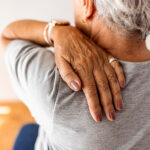
5 Signs of Osteoporosis You use your arms to get out of a chair. If you need to use your arms to push off, it may be a sign of weakening muscles, which are a good predictor of weakening bones. ... You're taking thyroid medication. ... You're noticing some hearing loss. ... Your lower back hurts. ... You're frequently bloated or constipated
What are the three stages of osteoporosis?

The stages of Osteoporosis Osteoblasts vs Osteoclasts. Active Osteoblasts. ... Peak bone density and the first stages of osteopenia and osteoporosis. ... The second stage of osteopenia and osteoporosis. ... The third stage of osteopenia and osteoporosis. ... The fourth stage of osteopenia and osteoporosis.

